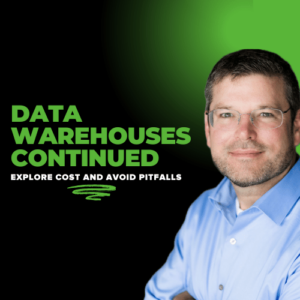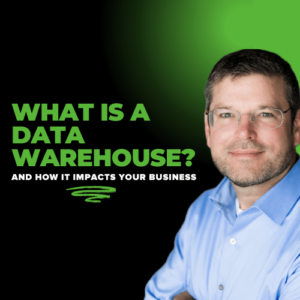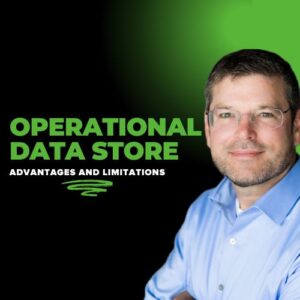Recently I subscribed to Starlink, and I want to talk a little bit today about what Starlink and other advanced technology things mean to me. What I think it means to all of us. First, I will start off describing a few things that are going on in the world and then I want to talk about why I think these things are important to business intelligence.
So first of all, connectivity. One of the things that we need, obviously for people in technology roles and others, is a way to be connected. Having been on the road quite a bit I can tell you that it’s not the easiest thing, especially if you’re someone that’s traveling frequently. I travel in a van and it’s always a problem. Everywhere I go I have to make sure that I have connectivity because, obviously, it’s critical for the role that I play.
STARLINK
So how do I handle that? Well, I subscribe to AT&T, T-Mobile, and Verizon. I have a VPN set up. I have a server in the cloud. I have the ability to combine connectivity. At the end of the day, this setup that I have, or had, would enable me to travel from place to place. I am typically driving, and it would enable me to be connected. The limiting factor was you really had to be close to a city, some metropolitan area or a highway. You really couldn’t be out in the middle of nowhere because you’re not going to get great cellular coverage. Well, here comes Starlink. Everybody probably knows by now that Starlink is a low orbit, satellite-based internet service.
I was able to obtain a subscription to Starlink and I recently got the hardware. I’ve been testing it just for a couple of weeks and now I’m on my first trip with Starlink. On this trip I’m going toward the Northwest. I live in Austin, I am driving to the Northwest, up to the Seattle area, and then I’ll make my way back to Austin. There’s a lot of rural areas between where I live and where I’m going, so typically what I would have to do is chart a course between the two places and make sure that I’m going to be in populated areas or at least close to highways that have decent coverage. A lot of the times what would end up happening is I would get to a place; I’d get set up and the first thing I have to do before I really set everything up is test connectivity. If connectivity is not good enough, even with all three carriers and the best system that I can find, I would have to pack up and go to the next town. Sometimes that’s quite inconvenient. So, this time I have Starlink. Yesterday I was in the Utah area, just north of Arches National Park. I’m at some BLM land, which is Bureau of Land Management, public land where you can camp freely. So, I was able to get in there and of course I have no cellular coverage for the most part, maybe one bar on a couple of carriers, nothing that would be good enough for work. Then I fire Starlink up and I have plenty enough internet for what I do.
That is a game-changer. Not just for me, but for many people like me. At this one little BLM land where I was there were a lot of people there. It is just surprising how many people are living this nomadic lifestyle. And I know some are doing it part-time. I’m not full-time on the road. I just go whenever I have the opportunity or for conferences. But there are a lot of people that are full-time and they just go from one place to the next and that’s the way they live their life. One of the things that’s enabling this is connectivity, the ability to be connected via whatever means. I’m not saying they all have Starlink, but more and more I’m sure will take advantage of that service. Being able to be connected is critical. It’s one of the things you must have in order to live this sort of lifestyle. Well, I shouldn’t say must have, but it makes it a lot easier if you can establish a connection.
SOLAR ENERGY POWERS MY VAN
So another thing that’s timely right now, I think, is the level of sophistication or capability that solar energy has. Solar panels now are a little bit more efficient than they were in the past. They also are a lot less expensive than they were in the past. You can get solar equipment a lot cheaper, like the solar charge controllers, inverters, etc. They’re readily available. They’re quite easy. I’ve built a solar system in my van. That’s how I power my van whenever I’m traveling, not for the driving part, but for the internal stuff. Solar energy powers my air conditioner, my computer, my induction cooktop, etc. It’s able to handle all the things that I need using this solar powered energy system.
Battery technology is also at a point now where it’s very, very capable. I use lithium batteries. I run about 10 kilowatts or I have about 10 kilowatts of storage and I can do that in a way that’s pretty convenient. I don’t really have to worry too much about my energy because it’s going to be coming from the sun and if I don’t get energy from the sun for a day or two, I’m going to be okay, because I can always just run it off of my vans alternator. Actually, I have an oversized alternator. Anyway, what I’m saying is energy is now something that I believe is very obtainable. It’s another component that enables people to be mobile and it’s very obtainable today to do so using an energy source that’s based on solar.
WORKFORCE CHANGES
Another thing that I think is going on in the world is that people seem to not stay with one job for their whole life. This is not anything new. My parents or my dad stayed with a refinery. He worked for a refinery his whole life. That’s really his only job. And that’s not something you really hear much of nowadays. I certainly didn’t work for one company for my whole career, and I think that it’s only accelerating in how often younger people are moving from one role to another. Because of that, it means that often they need to move from one place to another. So being able to do that and not have to worry about breaking your lease at your apartment, selling a house, etc. is also something that’s very appealing, I believe, to a lot of people.
REMOTE WORKING
In addition to the changing job situation a lot of people are simply remote. It doesn’t really matter where they’re working. LeapFrogBI is a good example of that. Our entire workforce is remote. We don’t go to an office and see each other. There is no office. We are all remote and it works very, very well because today we have the tools we need. We have webcams, we use Teams for our messaging, and all the communication tools there. Of course, we use email and if we ever really wanted to, we could make a phone call. Usually, it’s just a Teams meeting or something of that nature. The remote workforce is becoming larger and larger. Now not everybody’s going to be part of the remote workforce, obviously, depending on the role you’re playing, that’s going to determine whether it’s viable for you to be in a remote role. A large part of society is in a role that can be at least partially remote.
COST OF LIVING
Another factor that I believe is really important is cost of housing. It is extremely expensive. Again, I live in Austin and the cost of housing is just crazy. It’s not as if someone who’s just starting out can go buy a home. It’s not going to be possible. At least not anywhere in the central area of Austin or anything close in at all. The cost of housing is not good. You can’t begin to gain equity in a house because you can’t afford to buy a house, especially if you’re just entering the workforce. That’s very challenging. I think younger people and myself included have ended up renting for some period of time until you can find a way to move into something where you’re going to begin to own a house. When you combine home ownership with changing jobs, remote workforce, and moving from one place to another, it’s not as appealing. You aren’t going to have much of a guaranteed situation if you’re buying and selling your home every year or two. So that’s another challenge there.
BETTER FOR THE ENVIROMENT
Another thing that I think that a lot of people are interested in is environmentally friendly living. For a long time, I’d say there’s been a very big drive toward bigger and bigger homes and not that’s over, but it does seem like there’s a growing community of people out there that are looking for ways to live without having an impact on the planet and the environment as a whole.
Then, electric vehicles are here. No doubt about that. They are going to be just more and more common. There’s obviously plenty of brands now that are moving into this field. I guess pretty much all of them at this point have some type of electric vehicle either on the road or they’re planning to release one and it’s not just sedans and cars. Now we have trucks that are electric and soon we’ll have semi-tractor trailers, large trucks that will be fully electric. The trucks, at least the ones that I’ve looked at are sort of the first wave of trucks is what I would say. They don’t seem like they’re going to be a viable alternative for pulling heavy loads and that sort of thing, at least not in the next real near future. I’m sure eventually they will be. So anyway, electric vehicles are here.
All these things that I’m mentioning are just observations. We’ve got connectivity anywhere we want to be. Starlink is a big player in that. We’ve got alternatives for getting energy wherever we are. Solar is now advanced enough where you can pretty much set up a system on, in my case, on my van. I’ve got enough energy to run everything I need right here in my van without having to plug in. You have the societal situation where people are changing jobs often, especially when people are beginning to enter the workforce. They’re going to change jobs for some amount of time and there’s also the remote workforce. So you may never actually even go into an office anymore. You’ve got the cost of housing being very, very high in growing areas especially. Then you have this overall growing community of people that want to be environmentally friendly. They want to live without leaving a negative impact on the environment. And finally electric vehicles are here. So all of these things I believe are appealing to people that want to maybe not have the conventional life, at least for some part of their life. They don’t want to rent an apartment. They don’t want to buy a home. They just want to be free to move around wherever they want to move, when they want to move. I really think that’s really the appeal of this type of nomadic lifestyle is the freedom and potentially the quality of life if it’s what appeals to you, it’s that freedom and quality of life that is going to draw more and more people into this nomadic lifestyle, in my opinion.
BUSINESS INTELLIGENCE IN TODAY’S WORLD
What does all of this have to do with business intelligence? Well, I think it has a lot to do with business intelligence because I see this as a growing trend. It’s obviously important in business intelligence for us to understand the influencers on success. Ultimately, that’s what we’re trying to do. We’re trying to understand the environment that we’re operating in so that we can make decisions that have desirable outcomes. So, if you are a brick-and-mortar type of company, for example, you have storefronts. This type of a trend may accelerate your desire to have a more diverse set of stores across the country. More geographically diverse set of stores, because one of the things about nomads is every city you go to, you’re going to have to buy stuff. The supplies that you need and sometimes people just through habit are going to want to go to the things that they’re familiar with. They’re already comfortable buying from, for example, Walmart or Target. They’re going to look for a Walmart or Target in the next town and that’s a comfortable experience for them. So, brick and mortar type stores might want to note that, because just simply having a presence could make a big difference.
Another thing that might be important is if you are a company that either doesn’t have an internet presence or doesn’t have a well-established internet presence. That might be something that needs to be focused on because having internet connectivity as a nomad, that’s going to be one of the most important things to these types of people is being able to go and buy things online. That leads us to how are they going to pick up those things, right? If you’re moving from place to place, then how are they going to order something from you and then pick it up. Where are you going to send it? So that’s where there’s gaps still. I mean, there’s some solutions to that like Amazon lockers where you can have a delivery sent to an Amazon locker pretty much anywhere in a large city. But there’s still challenges. So it’s just something to be aware of if you’re trying to serve this type of community.
Then another thing you might think about is your workforce, like at LeapFrogBI. We’re completely remote and what does it mean to your workforce if they’re mobile? What types of, I don’t know, culture does that establish, what kind of rules do we need? If you have a mobile workforce, you need to make sure that everybody is responsible for their connectivity because at the end of the day if they’re not connected and they’re mobile, well, they’re basically not at work. There are some things that need to be considered here when we talk about having a mobile workforce.
In addition to that, know what types of products and services might appeal to this nomadic community. There’s all sorts of things that could apply here for healthcare, for example. If you’re a healthcare organization and you are serving one region and you’re considering expanding to other regions, then it might be a good idea to market that information in a way that people understand that you’re across the country. Being in multiple geographies in the country, United States, you might have an appeal to this type of community because they don’t necessarily know where they’re going to be in six months. But if you have a presence, at least in the major regions of the country, then that’s a lot more feasible for someone to go in for services, whatever it might be. It could be medical procedures, etc.
The other thing I’d say this means to business intelligence is trying to measure the impact that mobility is having on your business. This could be all sorts of things. If you’re an appointment type of a company where people have to set up an appointment with you, it could be tracking cancellations or no shows, or the reasons for those things. If you can get that information so you can see, is it this nomadic type of culture that is impacting your business, or maybe you’re a storefront where people are just walking in the door and you are noticing that you’re getting a lot more first-time customers, but nobody’s repeating. Maybe there are people that are just passing through and that’s just something you need to be aware of and think about how to cater to that.
Of course, finally, mobile business intelligence. Having a front end where you can deliver reports that are going to cater to a mobile workforce is not something that should be a second thought anymore. It really needs to be front and center, I would say. You must think about how you’re going to deliver this information to a mobile workforce. That doesn’t necessarily mean that you need to build all of your reports for an iPhone or a tablet. You do have to think about how they’re going to access these reports. You need to think about how they’re going to do so securely and several other factors. Thinking about mobile business intelligence or how a mobile workforce is going to access your reporting solution is something that should be considered early on.


